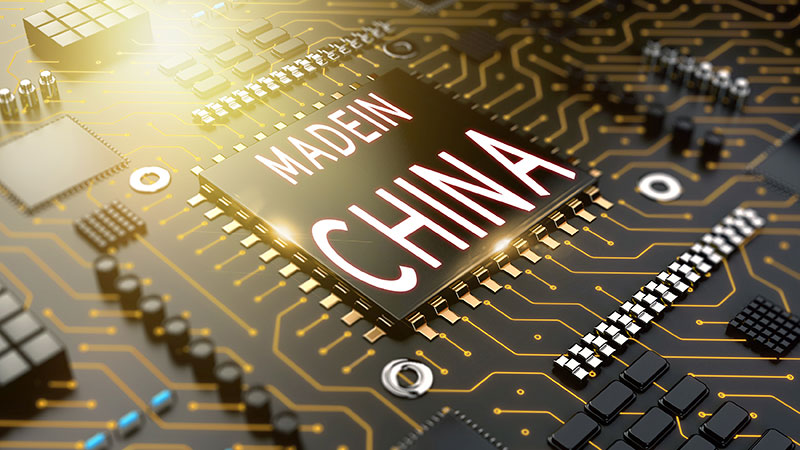Cleaning of the photovoltaic and semiconductor industries
Release time:2023-08-03 13:30:32 Author:科胜美 Viewed: 499 times
In chip manufacturing, ozone is mainly used to clean wafers; Eliminate organic matter, metals and particles; Remove photoresist; Disinfect deionized water facilities. Ozone cleaning always involves oxidation and process differences depend on the main purpose of the cleaning step.
Remove organic matter. Much of the information on the ability of ozone to remove organic matter comes from studies of drinking water and wastewater treatment. Ozonated deionized water (DIO3) has a high oxidation potential to degrade organic pollutants. The removal efficiency depends on the type of organic species, ozone concentration and reaction mode.

Ozone dissolved in ultrapure water produces OH reactive radicals during self-decomposition. When ozone directly decomposes organic matter, reactive free radicals decompose indirectly. Different reaction modes lead to different oxidation products. The direct ozone reaction mode is selective and usually has a slower reaction rate. Indirect OH reactions are fast and non-selective, but must be activated by initiators such as high pH, hydrogen peroxide, or UV radiation. Although a fast reaction is required, the use of free radicals alone should be avoided. In many cases, active substances must act directly on the surface because substances that are too far from the surface are inactivated and lost.
Remove metals and particles. DIO3 alone cannot effectively remove metals such as iron, nickel, aluminum, magnesium, and calcium, which are deposited on the silicon surface, such as metal hydroxides or metal oxides. Depending on their properties, metals can be mixed with oxide layers or located in the Si-Sio 2 interface. They can act as ion exchangers to remove acids or dissolve oxides. Hydrofluoric acid (HF) can remove metals.
If the attached particles are organic, DIO3 alone may be sufficient to remove the attached particles. However, diluted hydrofluoric acid (DHF) is usually used to etch the oxide underneath the particles to avoid particle deposition to remove particles on the silica. If most of the particles are not dissolved by DHF, O3 acting as an oxidant can produce a new layer that can be etched by HF. This is true for both silicon particles and silicon surfaces.
The formation of oxide layers on silicon is a self-limiting process. At room temperature, oxidation of the silicon surface produces an oxide layer, which can reach a thickness of about 1nm. The quality of the thin oxide layer depends on other parameters such as humidity. The growth rate of the initial oxide was a function of the ozone concentration in the tests with spray and impregnation tools. 2 In the impregnation tool, the thickness of the final oxide depends on the initial ozone concentration and pH, indicating a reaction limiting process. However, since electrostatics used the system in these tests, the attenuation and depletion of ozone may affect the results.
Several studies have been published on cleaning processes involving ozone with HF, hydrochloric acid (HCL), or a combination of both. In these studies, chemicals were applied sequentially or as a spray, immersion baths or mixtures in monolithic wafer processes were cleaned by rotating monolithic wafers of ozonated water and diluted hydrogen fluoride (SCROD), and diluted DHF and DIO3 were alternately distributed on the rotating wafers. Depending on the desired final surface conditions, the process ended with DHF/ rinse or DIO3/ rinse followed by rotational drying in nitrogen. Within one minute, the three-cycle process can remove 87% of Al2O3 particles, 97% of Si3N4 particles and 99.5% of polystyrene latex particles. In contrast to the simultaneous use of DHF and DIO3, repeated SCROD cleaning does not increase the surface roughness.

The Advanced Cleaning and Drying (ACD) method developed by ASTEC(Berg, Germany) combines metal removal and drying into one process using a mixture of DHF and O3. Combined with the particle removal step using conventional SC-1 cleaners or surfactants, the ACD process consumes 60% less chemicals than the conventional RCA process. The result is a hydrophobic crystal sheet that, if necessary, can be oxidized directly in gaseous ozone above the DHF/O3 bath.
Remove the photoresist. Conventional wet chemical processes rely on the combination of concentrated sulfuric acid and hydrogen peroxide (SPM) or ozone (SOM). The alternative to dissolved ozone in deionized water offers environmental benefits and reduced costs.
The stripping rate of photoresist in DIO3 increased with increasing ozone concentration or temperature (at a constant ozone concentration). Unfortunately, as the temperature increases, the saturated ozone concentration in the water decreases and the ozone decay rate increases. The ozone delivery process must be carefully optimized to achieve the maximum removal rate of photoresist.
